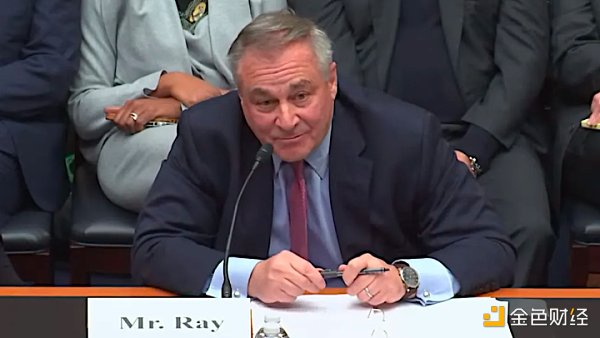FTX’s new CEO: FTX has been lying to banks about its mixed funds issue
FTX's new CEO reveals that the company deceived banks about its mixed funds problem.Author: Mat Di Salvo, Decrypt; Compilation: Song Xue, Blocking
FTX’s new CEO has claimed in an explosive new report that the former management of FTX lied to banks about the suspicious movement of customer cash as far back as 2020.
John J. Ray III alleged in a court filing on Monday that despite FTX Group portraying itself as a “pioneer in customer protection work in the cryptocurrency industry,” it allegedly intentionally mixed customer and company funds together in order to buy luxury real estate and engage in speculative trading on sister company Alameda Research.

- Regulatory intervention creates a “bottom” for the market. How will Wall Street’s entry during the chaos affect the industry?
- Understanding the working principle of LSDFi’s flagship project Lybra Finance and its V2
- So far, those who predicted a recession in the US economy in 2023 were all wrong.
FTX’s new CEO, John J. Ray III, oversaw the liquidation of Enron Corp. Photo: House Financial Services Committee
When banks pressured FTX management about liquidity issues, “FTX did not tell the truth to the banks.” Ray alleged, “It not only did this over the past year, but it has actually been using the Alameda account to conduct customer trades on FTX.com – FTX Group lied.”
FTX is a digital asset exchange that allows people to buy, sell, and bet on cryptocurrencies. But prosecutors say the company was mismanaged, leading to its surprising and rapid bankruptcy in November 2022.
The exchange’s management – previously described by Ray as “very inexperienced and immature” – allegedly misappropriated $8.7 billion in customer funds.
FTX’s former boss and co-founder, Sam Bankman-Fried, a former Jane Street trader and MIT graduate who had courted politicians and celebrities, faces 13 criminal charges after his arrest last year.
These charges include conspiracy to commit wire fraud, plotting to defraud the United States, violating campaign finance law, and bribery.
Last week, a new lawsuit was filed alleging that Bankman-Fried spent $700 million trying to buy influence from “super-networker” Michael Kives. Michael Kives is a Hollywood agent who later became an investor and former assistant to Hillary Clinton.
Ray, an experienced lawyer, is responsible for recovering funds lost by FTX customers. He previously stated that, although he dealt with the collapse of energy company Enron (one of the largest bankruptcies in history) in 2001, he had never seen such chaos before.
In Monday’s report, he added that although tracking suspected misappropriation of funds presented “challenges,” his team had successfully recovered “approximately $7 billion in liquid assets” and expected to recover more funds.
We will continue to update Blocking; if you have any questions or suggestions, please contact us!
Was this article helpful?
93 out of 132 found this helpful
Related articles
- Details analysis of Azuki Elementals Sale, is manual opening of images bringing higher premium space?
- Overview of the Derivative DEX Track: Will it Dominate the Next Bull Market?
- How did Binance Labs grow into a $9 billion scale and become the most resourceful crypto venture capital institution?
- BAYC Holder’s Story: How I Became a Diamond Hand?
- Radpie: Upcoming launch of RDNT’s “Convex”
- How to Trust AI: What Ideas Does Zero-Knowledge Machine Learning (ZKML) Offer?
- Founder of Aave: “DeFi frontend applications” such as payments will drive widespread adoption of Web3





